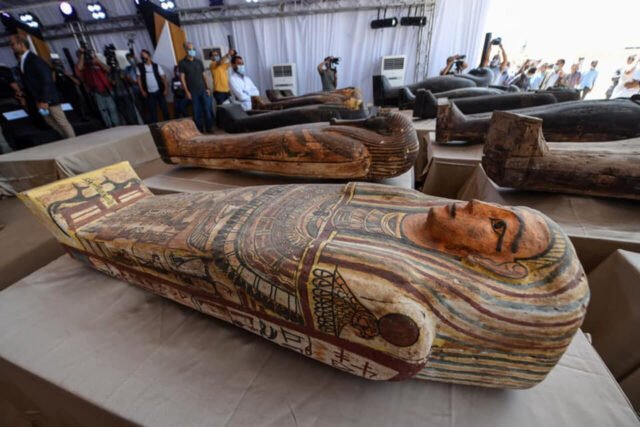The funeral industry has been around for a very long time. The modern methods and practices vary according to the varying religions but what remains constant is the benefit obtained from the ‘business’.
The ancient Egyptians mummified their people and the priest-embalmers acquired the most out of this bustling funeral industry. Starting with the rich (as they have been prioritized since times immemorial), richly decorated and well-kept tombs have been unearthed at various excavation sites.

Archaeologists have found that in paving the path for the afterlife, visible bias was exercised towards the rich and powerful. Pharaohs were prepared for the journey ahead to the great beyond as well as provided with materialistic goods for a smoother and self-sustaining journey.
Services Available For The Dead
The services available for the mummified pharaohs ranged from expensive golden funerary masks to cheap plastic masks with golden foils, from extravagant jars to store organs of the mummies to economical clay jars preventing organs from decaying, and so on.
“The evidence we uncovered shows the embalmers had very good business sense,” said Ramadan Hussein, an Egyptologist at the University of Tübingen in Germany, on the topic in conversation.
The embalmers, to extract money, made many alternatives available concerning the amount offered. Even the oils and resins used in the process of mummification fall prey to the unjust bias towards the economically sound pharaohs.
Read More: In Pics: 2500 Y/O Coffins Unearthed In Egypt, Some Containing Mummies
The Mummification
The protracted process of mummification had several steps. The first step was the removal of all organs for preventing the fast decay of the body and packing the organs within 4 jars.
This was followed by draining the body of all fluids using salt. Finally, oil and resins were used to help in the preservation and the entire process was wrapped up by wrapping the body with a linen cloth.
The end product was called a mummy, hence the name of the process. These steps had to be followed religiously and with utmost care for better, safer, and longer safekeeping.
“Mummification was a business transaction between an individual and an embalmer in which the embalmer was a specialist, a priest, and a businessman,” said Hussein.
The Bias Uncovered
Managing the clientele was something these embalmers did efficiently. One look at the monetary fund offered to them, and they knew exactly what to use in the mummification process.
But this bias did not end there, it got extended to the care-taking phase wherein the embalmers took extra care of the affluent mummies and bare-minimum attention was paid to the rest.
Burial took place according to the wealth offered and so was the depth decided. The depth here refers to the closeness of the mummy to the underworld, ie, the ground underneath. The rich were buried deep while others had to accept their fate and advance towards the journey (tougher than the fellow dead mates).
A regular fee was paid for the upkeep of the pharaohs by the loved ones (the living ones at that). The discovery of the ‘funeral home’ beneath the sands of Saqqara, a necropolis city of the dead—located on the banks of the Nile sparked the interest of many archaeologists and the evidence thus validated the concept of bias extended to the afterlife.
The truth behind the funeral industry has left everyone astonished and puzzled at the ingenious methods adopted and the religiously followed theories respectively.
Image Source: Google Images
Sources: National Geographic, Egypt Today, Business Wire
Find The Blogger: @evidenceofmine
This post is tagged under: Egypt, Egyptians, funeral, funeral industry, industry, afterlife, death, mummies, mummified, mummification, priest embalmer, embalmer, rich, bias, tombs, journey, archaeologists, history, excavation, dig, sands, earth, unearth, pharaohs, materialistic good, expensive, golden funeral masks, gold, silver, antiques, funeral masks, foil, golden foil, jar, organ jar, clay jar, decay, business, funeral business, Egyptian funeral, Egyptian funeral practices, Ramadan Hussein, University of Tubingen, Germany, money, cash, monetary fund, oil, resin, draining, fluids, body fluids, salt, preservation, rich Egyptians, linen, cloth, linen cloth, safekeeping, clientele, underworld, burial, buried, fee, maintenance fee, funeral home, Egyptian funeral home, Saqqara, Nile, Cairo, how were Egyptians buried, what is mummification, how do Egyptians bury their dead, how were mummies preserved, what was Egyptians’ funeral trade, how have Egyptians expanded their funeral business
Other Recommendations:
In Pics: Tracing The History Of Henna: From The Mummies Of Egypt To Brides Of India